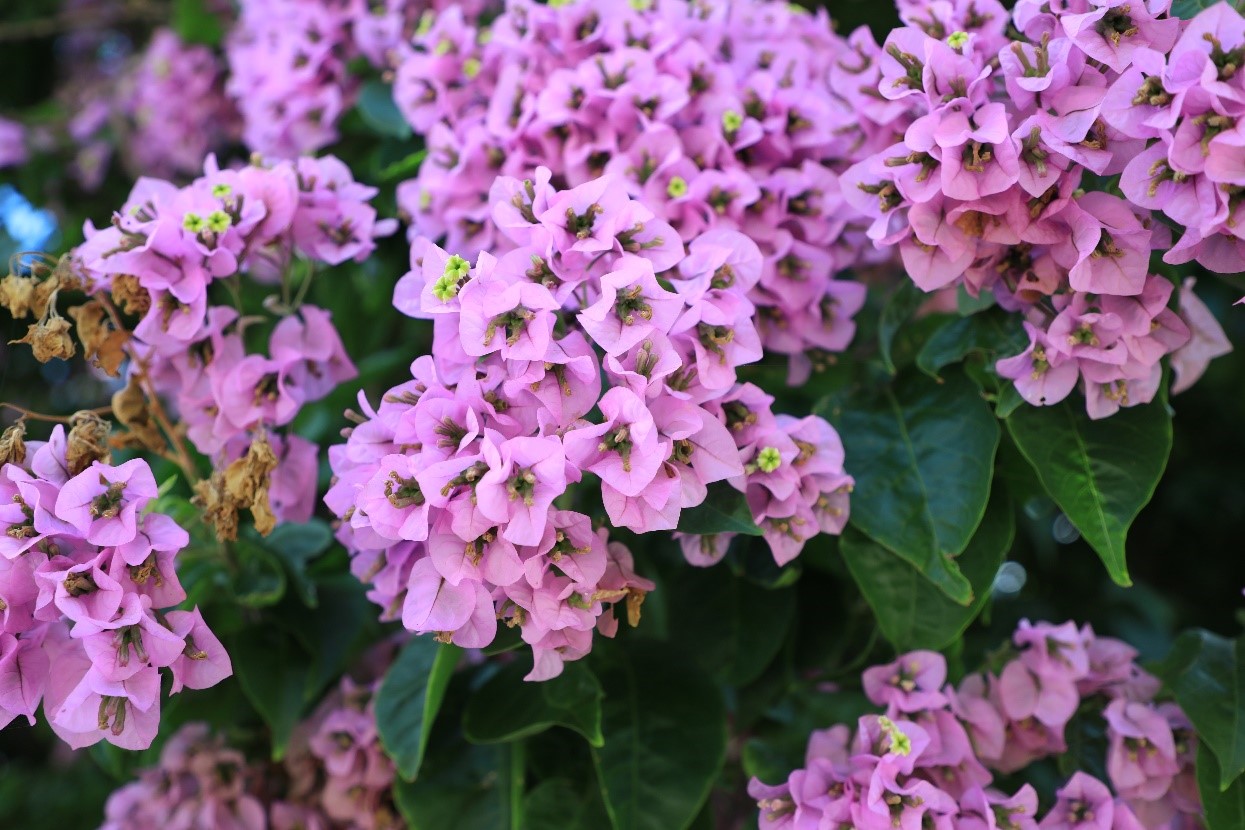
Bougainvillea are familiar to us as common thorny shrubs, vines, or trees bearing colorful papery “flowers” which are in fact modified leaves or bracts enclosing three simple waxy true flowers that are normally white or off-white in color. They are members of the four-o’clock family, the Nyctaginaceae, and between 4 and 18 species are believed to occur in the genus, as well as countless hybrids that further muddy the taxonomic waters. Anyone who has ever been to warm places like Florida, the Mediterranean, California, and pretty much anywhere in the tropics and subtropics is familiar with the gaudy Bougainvillea, but few people are aware of the amazing story behind its discovery.
The first representative of this genus was found in 18th century Brazil, near Rio de Janeiro, by a poor French peasant woman from the Loire valley, one of the most desperately impoverished regions of Europe at the time. So how did a poor woman from France get to Brazil to discover Bougainvillea? The Loire peasants were among the last of Western Europe’s landless serfs, and they still adhered to pre-medieval oral customs and beliefs, including that of wise-women and healers who were well-versed in all of the region’s useful plants. In the 18th century, their knowledge was taken up by university-educated male scientists and “discoverers” and written down, but these remarkable women were almost never given credit. In this manner, Jeanne Baret developed an intimate relationship, both professionally and personally, with Philibert Commerson, a well-known naturalist of the time, and became housekeeper and nurse to the widowed Commerson. In 1765, Commerson invited her to join him on the ship Étoile as both cabin mate and botanical assistant on explorer Louis Antoine de Bougainville’s round-the-world expedition. The only catch was that she had to disguise herself as a man named “Jean Baret” because the French navy prohibited women from joining those trips of discovery at the time.
 It’s hard to imagine the amazing things she and her shipmates must have seen nearly 70 years before Darwin’s maiden voyage on the HMS Beagle. As Commerson’s assistant, Baret did most of the collecting of flora and fauna because Commerson was frequently unwell on the trip. She procured the materials that he took credit for discovering and naming, including the Bougainvillea that Commerson would name for their ship’s captain, de Bougainville. After three years of travelling the high seas, Baret and Commerson left the expedition in Mauritius, where he died in 1773 at the disappointed age of 45. Baret returned to France, where the government gave her a pension for the rest of her life. Her contributions to the field of botany are immeasurable, if unrecognized, and the hardships she must have endured to gather specimens for Commerson are unthinkable. That Jeanne Baret’s story survives at all is astonishing, and she is the first woman known to have circumnavigated the globe. So the next time you see a Bougainvillea in bloom, think of that humble peasant healing woman and the extraordinary adventures around the world that took her far from the desperate lanes and fields of rural Burgundy.
It’s hard to imagine the amazing things she and her shipmates must have seen nearly 70 years before Darwin’s maiden voyage on the HMS Beagle. As Commerson’s assistant, Baret did most of the collecting of flora and fauna because Commerson was frequently unwell on the trip. She procured the materials that he took credit for discovering and naming, including the Bougainvillea that Commerson would name for their ship’s captain, de Bougainville. After three years of travelling the high seas, Baret and Commerson left the expedition in Mauritius, where he died in 1773 at the disappointed age of 45. Baret returned to France, where the government gave her a pension for the rest of her life. Her contributions to the field of botany are immeasurable, if unrecognized, and the hardships she must have endured to gather specimens for Commerson are unthinkable. That Jeanne Baret’s story survives at all is astonishing, and she is the first woman known to have circumnavigated the globe. So the next time you see a Bougainvillea in bloom, think of that humble peasant healing woman and the extraordinary adventures around the world that took her far from the desperate lanes and fields of rural Burgundy.
Written by Plant Records Keeper, Shawn McCourt, Ph.D.
